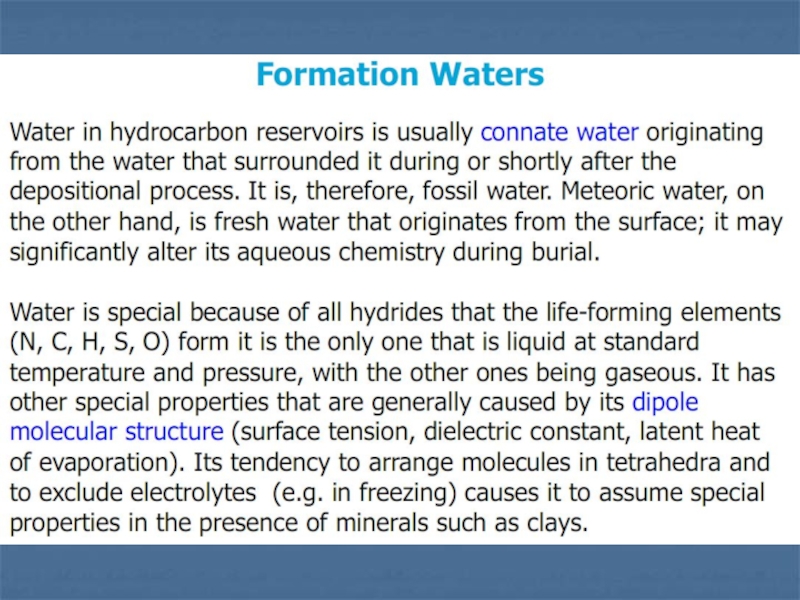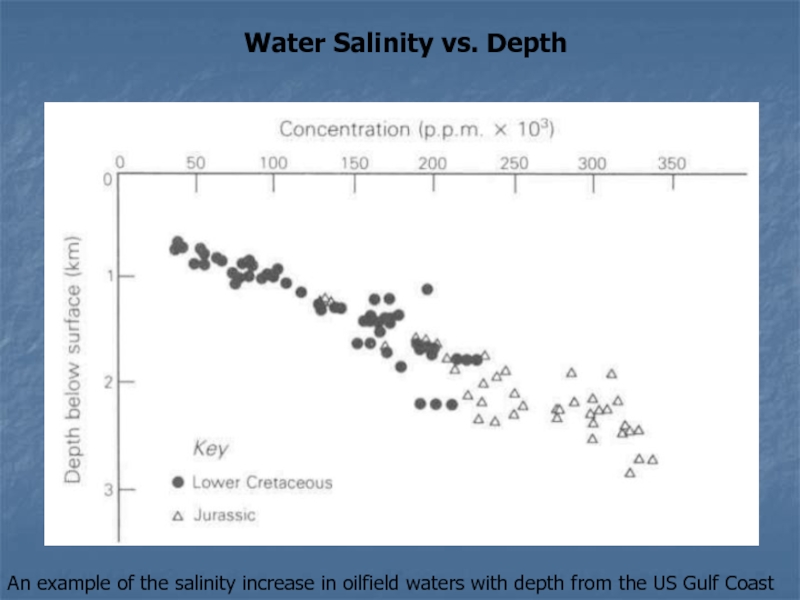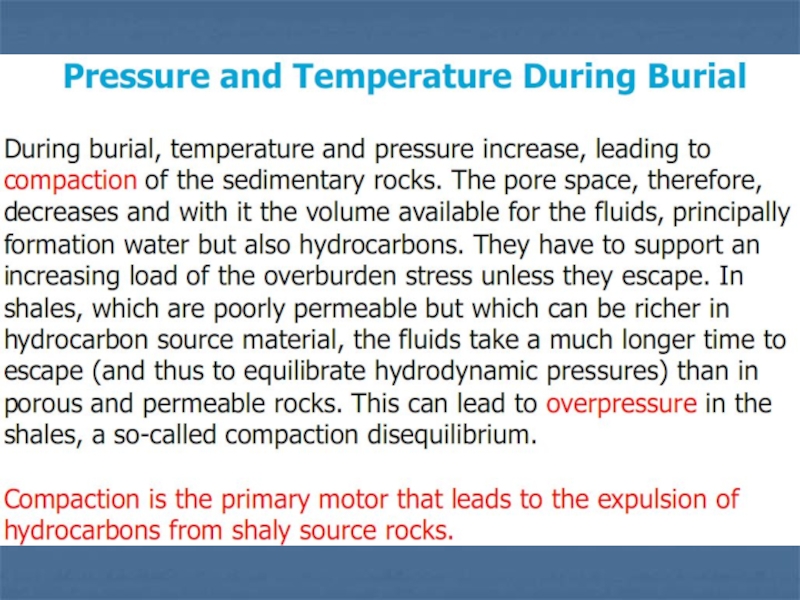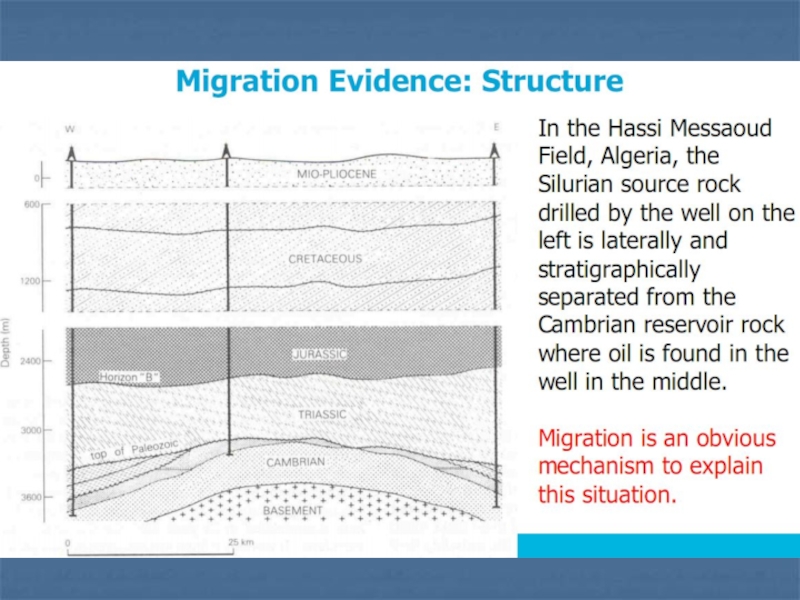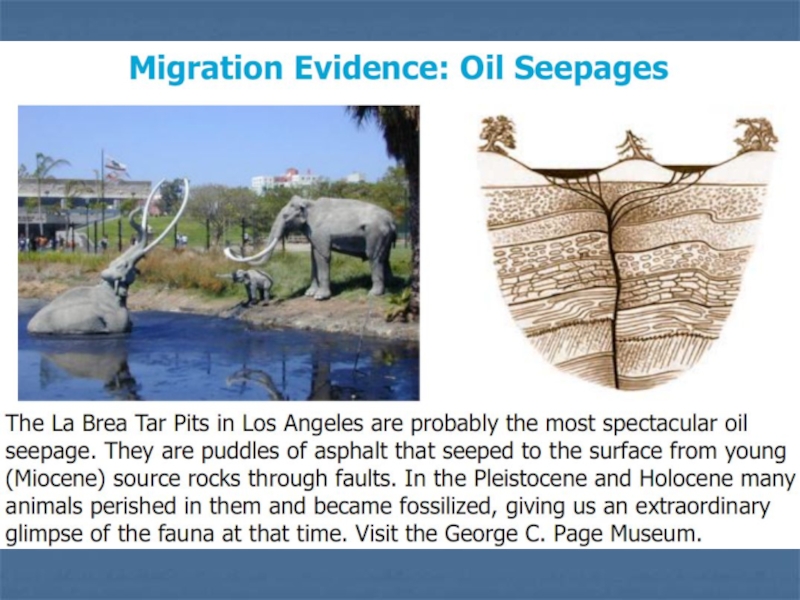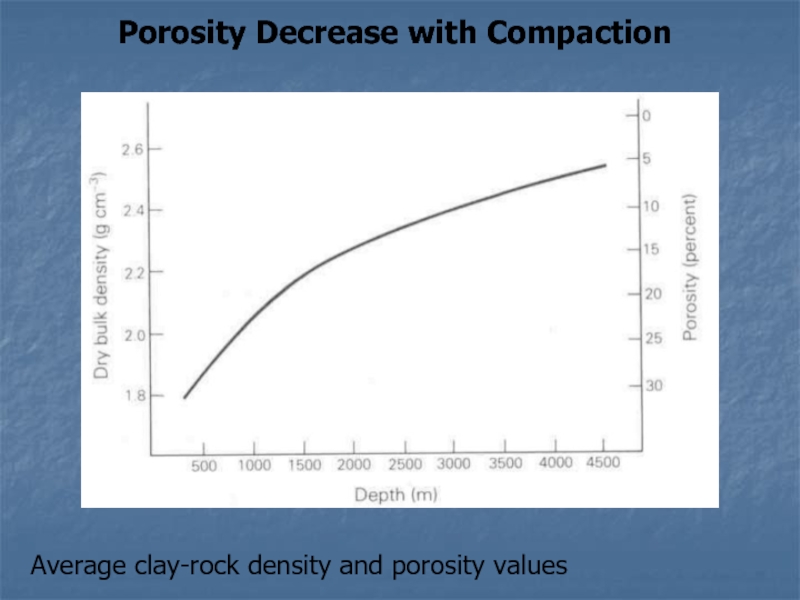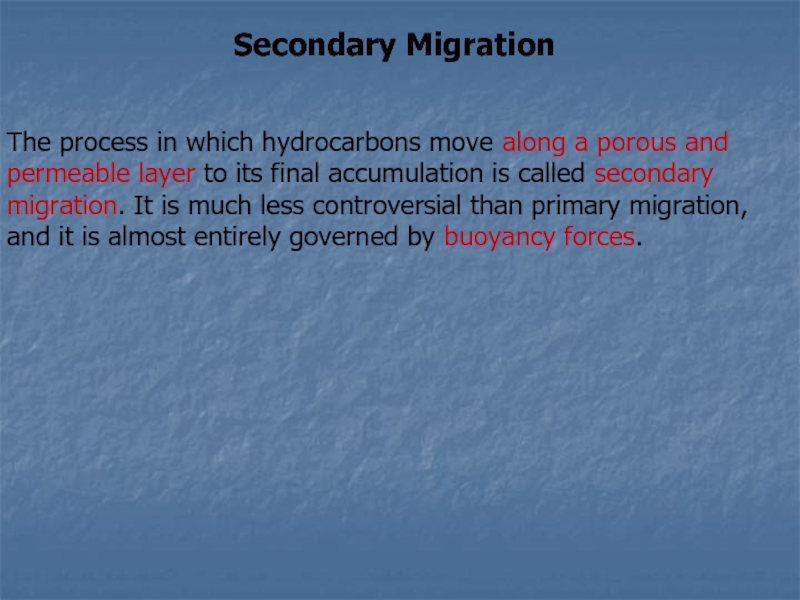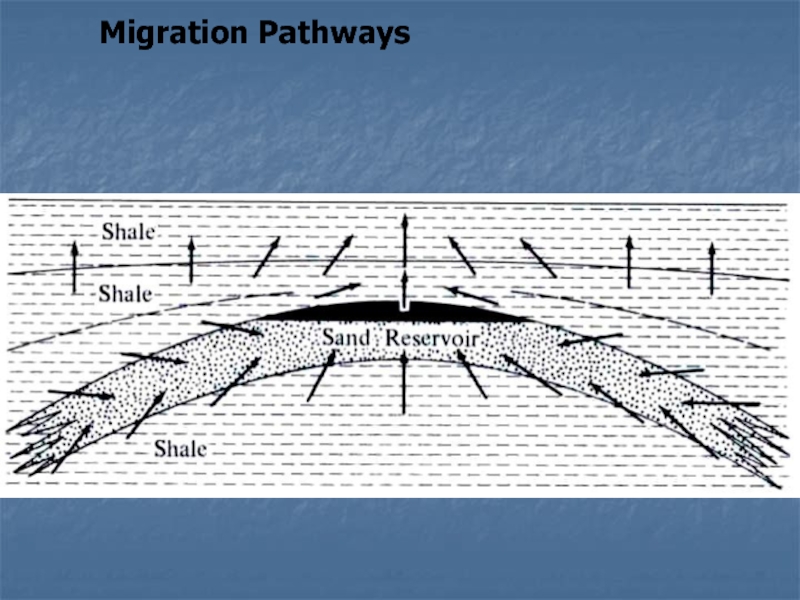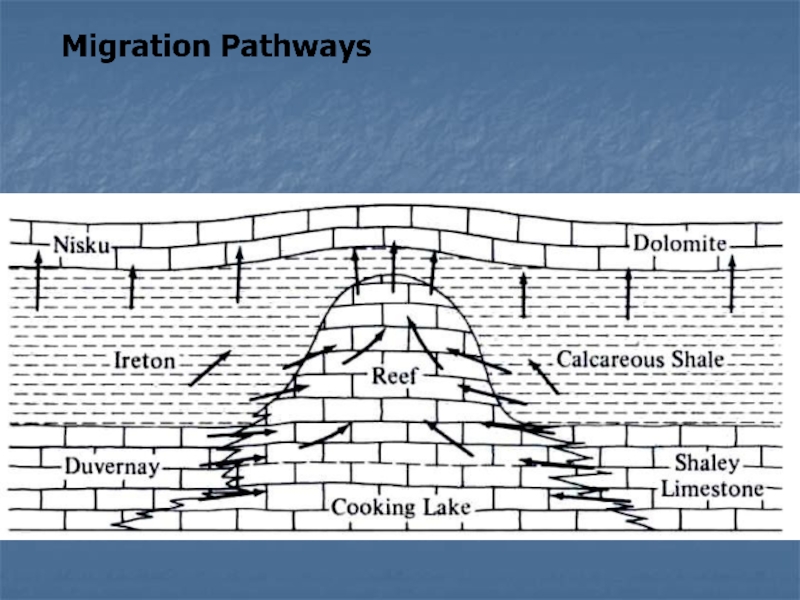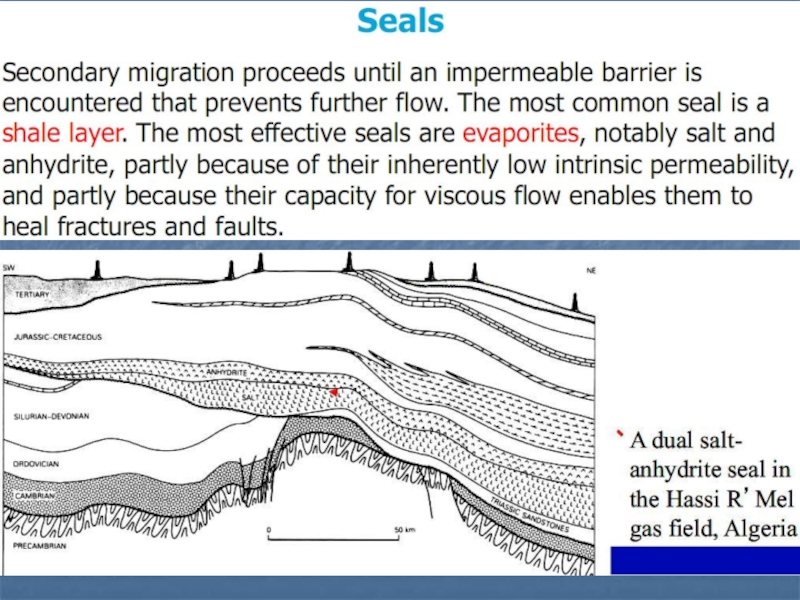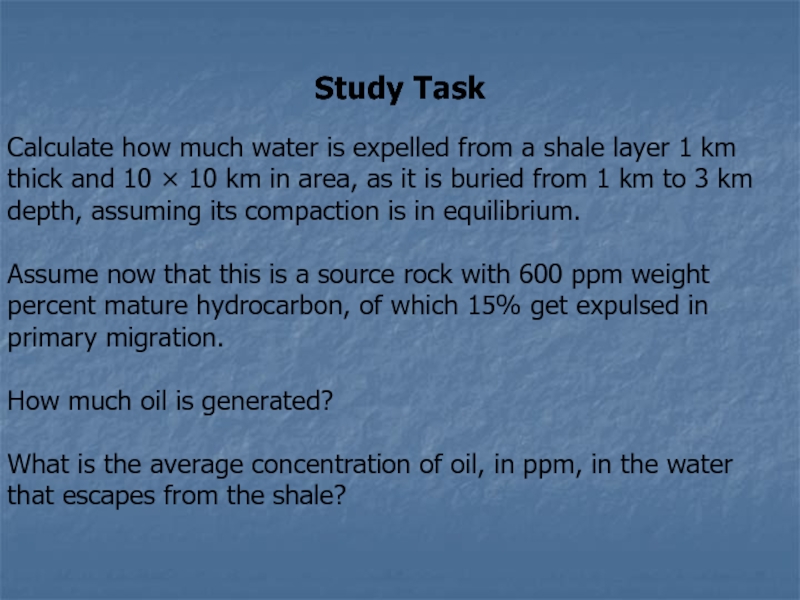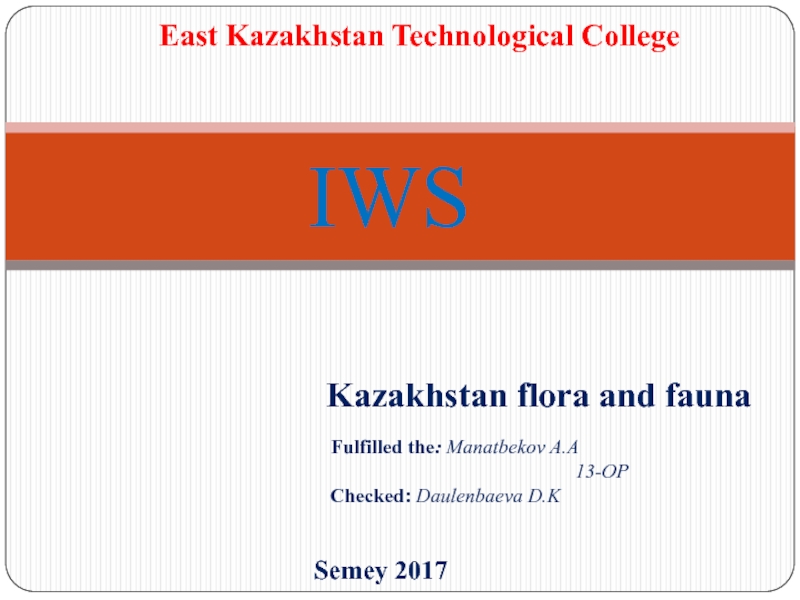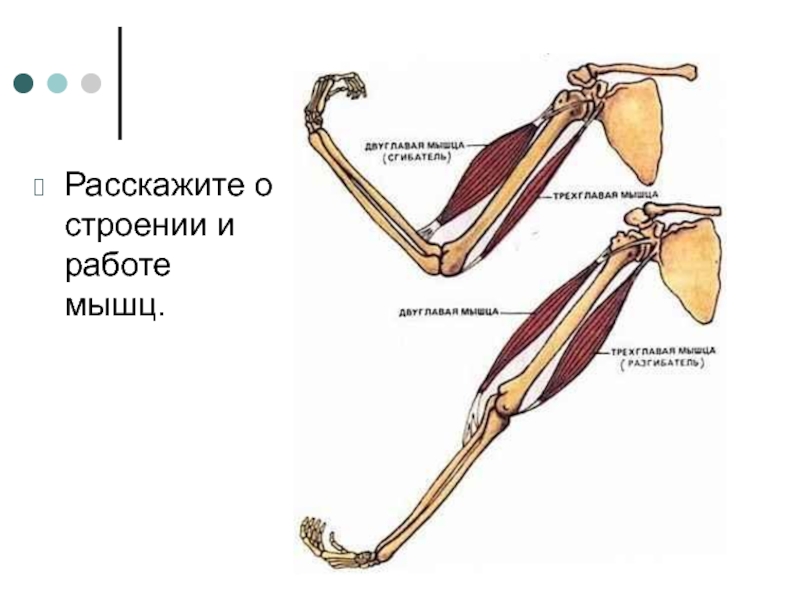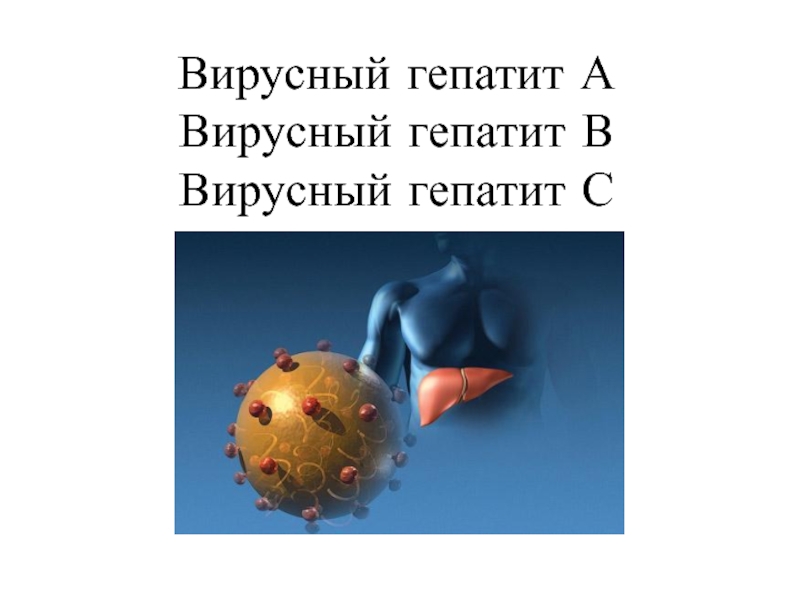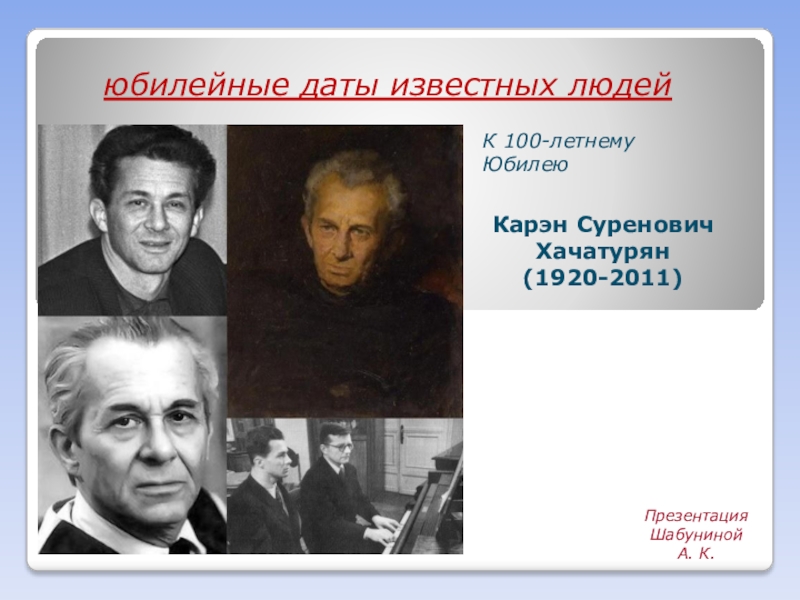Разделы презентаций
- Разное
- Английский язык
- Астрономия
- Алгебра
- Биология
- География
- Геометрия
- Детские презентации
- Информатика
- История
- Литература
- Математика
- Медицина
- Менеджмент
- Музыка
- МХК
- Немецкий язык
- ОБЖ
- Обществознание
- Окружающий мир
- Педагогика
- Русский язык
- Технология
- Физика
- Философия
- Химия
- Шаблоны, картинки для презентаций
- Экология
- Экономика
- Юриспруденция
4. Migration from Source to Reservoir
Содержание
- 1. 4. Migration from Source to Reservoir
- 2. Слайд 2
- 3. Слайд 3
- 4. Слайд 4
- 5. Water Salinity vs. Depth An example of
- 6. Слайд 6
- 7. Слайд 7
- 8. Слайд 8
- 9. Migration Evidence: SeepagesOil seepages can be seen
- 10. Слайд 10
- 11. Primary Migration Mature hydrocarbons first have to
- 12. Porosity Decrease with Compaction Shown are shale
- 13. Porosity Decrease with Compaction Average clay-rock density and porosity values
- 14. Primary Migration Controversy If we put the
- 15. Comments on Primary MigrationMany oil fields have
- 16. Primary Migration /2
- 17. Secondary Migration The process in which hydrocarbons
- 18. Migration Pathways
- 19. Migration Pathways
- 20. Слайд 20
- 21. Слайд 21
- 22. Слайд 22
- 23. Слайд 23
- 24. Слайд 24
- 25. Conclusions on Migration We distinguish primary and
- 26. Study Task Calculate how much water is
- 27. Скачать презентанцию
Water Salinity vs. Depth An example of the salinity increase in oilfield waters with depth from the US Gulf Coast
Слайды и текст этой презентации
Слайд 5Water Salinity vs. Depth
An example of the salinity increase
in oilfield waters with depth from the US Gulf Coast
Слайд 9Migration Evidence: Seepages
Oil seepages can be seen from satellite images
with SAR. Left: Santa Monica Bay, California. Above: Caspian Sea,
AzerbaijanСлайд 11Primary Migration
Mature hydrocarbons first have to migrate out of
the source rock.
This is in general a fine-grained rock
that has a low permeability, for reasons outlined earlier in this course. During burial, this rock
gets compacted and its interstitial fluid become overpressured
with respect to surrounding rocks that have higher permeabilities
and from which fluids can migrate with greater ease upwards.
Therefore, a fluid pressure gradient develops between the source
rock and the surrounding, more permeable rocks. This causes the
fluids - the water and the hydrocarbons - to migrate along the
pressure gradient, usually upwards, although a downward
migration is possible. This process is called primary migration,
and it generally takes place across the stratification. Why?
Слайд 12Porosity Decrease with
Compaction
Shown are shale porosities
from various
regions. The Dickinson curve is from undercompacted
shales in the
Gulf Coast. The Athy curve from
Paleozoic shales in
compaction equilibrium.
Слайд 14Primary Migration Controversy
If we put the principal requirements for
oil generation and
migration together, we end up in a
substantial dilemma: 1. Oil is generated at temperatures of 60° to 120 °C, which are
typically found at depths of 2 to 4 km.
2. Source rocks at these depths are so compacted that their
permeability is too low for efficient primary migration.
This dilemma is not solved yet, but many ideas have been
proposed to circumvent it.
At the core of the problem is the question of how hydrocarbons
migrate.
Слайд 15Comments on Primary Migration
Many oil fields have very large time
gaps between the
age of the source and reservoir rocks,
and the formation of the trap (before which migration cannot occur). Most traps are, in fact, relatively young. This suggests that migration and accumulation may proceed in two or more different stages: An early migration in which permeabilities are relatively high and gas may be available to dissolve hydrocarbons, but where the
hydrocarbon generation is inefficient,
and
a later stage at which oil generation is efficient but permeabilities are low.
Слайд 17Secondary Migration
The process in which hydrocarbons move along a
porous and
permeable layer to its final accumulation is called
secondary migration. It is much less controversial than primary migration,
and it is almost entirely governed by buoyancy forces.
Слайд 25Conclusions on Migration
We distinguish primary and secondary migration.
While
primary migration is slow and proceeds over short distances, secondary
migration is faster and can proceed over very long distances (more than one-hundred kilometers).There are several theories for primary migration, among which
diffusion, oil-phase migration, micro-fracturing and migration in
solution.
Secondary migration is better understood and leads to the
accumulation of hydrocarbon in traps where a seal prevents them
from further migration.
Слайд 26Study Task
Calculate how much water is expelled from a
shale layer 1 km
thick and 10 × 10 km
in area, as it is buried from 1 km to 3 km depth, assuming its compaction is in equilibrium.
Assume now that this is a source rock with 600 ppm weight
percent mature hydrocarbon, of which 15% get expulsed in
primary migration.
How much oil is generated?
What is the average concentration of oil, in ppm, in the water
that escapes from the shale?


